The first domestic aircraft carrier in India was officially served: the construction delay caused 6 times the cost over spend, and the "shared" fighter with the old aircraft carrier
Author:Red Star News Time:2022.09.03
On September 2nd, local time, the Indian Navy announced that the first domestic aircraft carrier "Vikrant" officially started service. Since the beginning of 2003, the design, construction and testing process of this aircraft carrier consumed for nearly 20 years. Due to the delay in construction, the total cost of the "Vikrant" aircraft carrier increased by 6 times compared with the budget, up to 200 billion rupees.
It is reported that the Indian Navy is still purchasing fighters and helicopters for the aircraft carrier, and can only "share" the Russian Mig-29K fighter with other aircraft carriers. Just as the new aircraft carrier was not officially put into strategic deployment, there were differences in opinions from the Indian Navy's construction around the construction of the second domestic aircraft carrier.
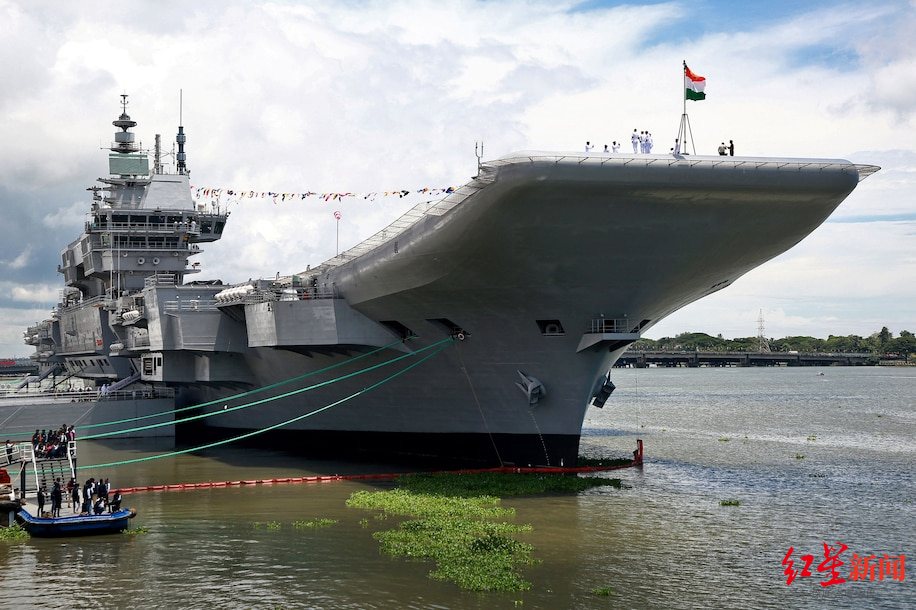
↑ On September 2nd, local time, India's "Vikrant" aircraft carrier officially served
Aircraft carrier construction delays for 6 years
Cost over 6 times to 200 billion rupees
According to reports, the name of India's first domestic aircraft carrier originated from the first acquired aircraft carrier "Vikrant" in the country's history. In 1957, the Royal Navy sold the aircraft carrier to India, and then modified it for 4 years in Bellster, Northern Ireland. In November 1961, the aircraft carrier named "Vikrant" arrived in India and was officially compiled into the Indian Navy fleet. It finally retired in 1997. It is reported that "Victor" means "brave" in Sanskrit.
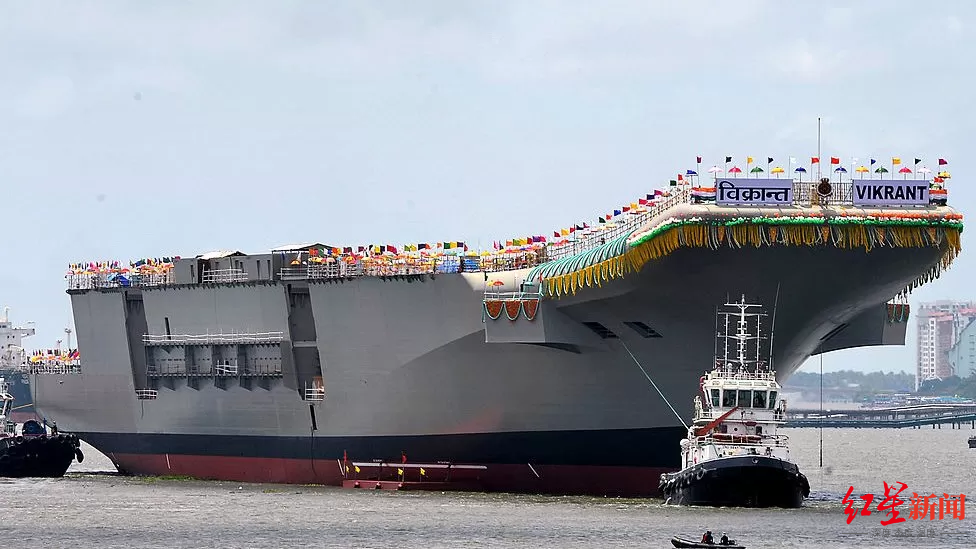
↑ In 2013, India's first domestic aircraft carrier "Vikrant"
In January 2003, the Indian government approved the design and construction plan of the first domestic aircraft carrier. Six years later, the "Vikrant" aircraft carrier laid keel in February 2009. In August 2011, India's then Minister of Defense Anthony reported that the aircraft carrier would be launched for the first time in December of the same year. However, the "Vikrant" aircraft carrier returned to the dry dock before the dry dock was emerging at that time to integrate with the advancement and power generation system. It was not until August 2013 that the "Vikrant" aircraft carrier launched water at the Kachin Shipyard.
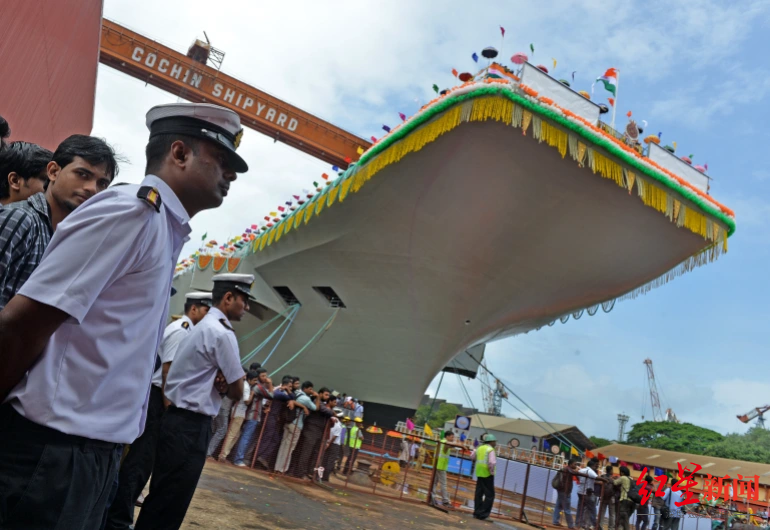
↑ On August 12, 2013, the Indian Navy held a launching ceremony for the first domestic aircraft carrier "Vikrant" at the Kachin Shipyard
Subsequently, the construction plan of the "Vikrant" aircraft carrier had various delays, including the need to redesign the function, and the sudden outbreak of the new crown epidemic from Russia and the global new crown epidemic. According to the plan, the "Vikrant" aircraft carrier should be delivered in December 2010 and officially served in 2016. It is reported that this project is affected by the delay of the delivery of the carrier's gearbox, as well as the delays caused by the accident and the problem of the generators and the generator of the diesel generator.
It was not until the morning of September 2nd this year that the Indian government officially held the service ceremony for the "Vikrant" aircraft carrier in Kachin. The aircraft carrier was the product of the process of designing, manufacturing and testing in the past 20 years. According to the analysis of national defense experts, the 6 -year -long construction delay led to the cost of the "Vikrant" aircraft carrier 6 times more than the initial budget to 200 billion Indian rupees (about 17.3 billion yuan).
Interior of the aircraft carrier:
A fighter, a helicopter, "shared" with the old aircraft carrier
Compared with the same -name aircraft carrier acquired from the United Kingdom, the new "Vikrant" aircraft carrier produced by India is 262 meters in length, and the length is increased by about 70 meters. The full -load displacement of the new aircraft carrier is about 43,000 tons, and its predecessor is 20,000 tons. The new aircraft carrier provides power by the LM 2500 gas turbine from 4 US -General Electric Corporation. Its maximum speed is estimated to be 52 kilometers per hour, and the range is about 13,890 kilometers.
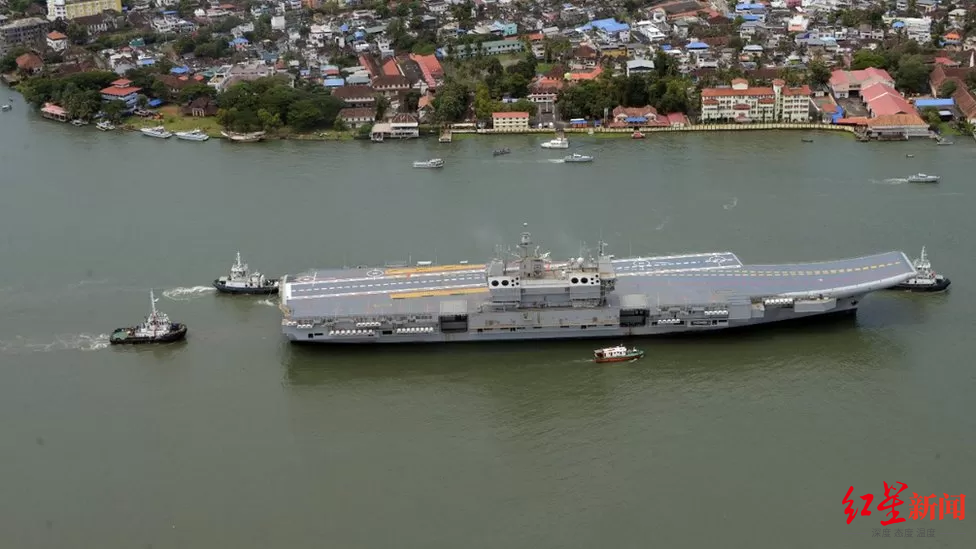
↑ The new "Vikrant" aircraft carrier produced by India is 262 meters long
According to the Indian Ministry of National Defense, more than 75%of the new "Victor" aircraft carriers are purchased from local procurement, providing equipment and machinery from 6 large industrial enterprises and more than 100 small enterprises. The new aircraft carrier is designed as a capable of 30 fighters and helicopters, with about 2,200 cabins and can accommodate 1,700 crew members. According to reports, the "Vikrant" aircraft carrier has a hospital with 16 beds, as well as two operating rooms and intensive care rooms.
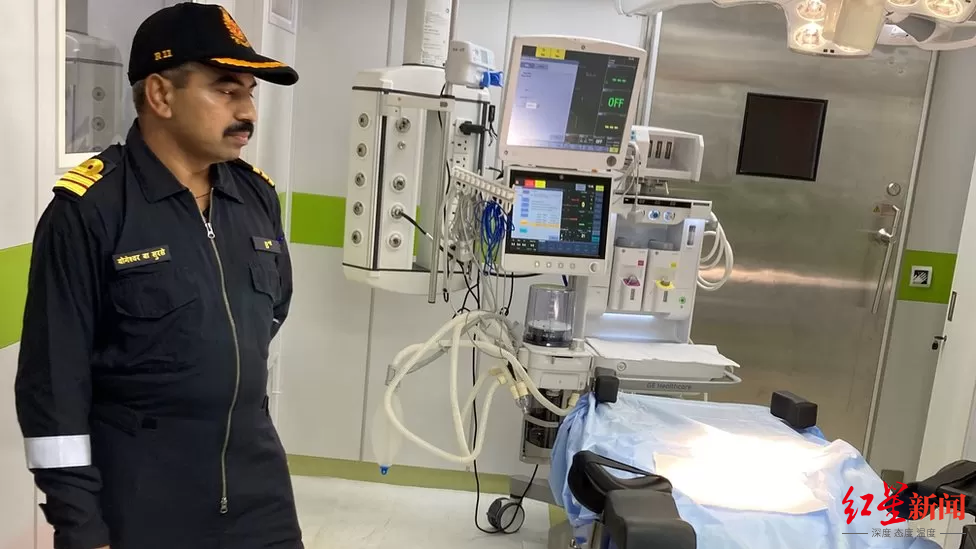
↑ Medical facilities inside the aircraft carrier
Before the starting ceremony on the 2nd, some media found that after visiting the internal facilities of the aircraft carrier "Vikrant", it was found that only two aircraft were placed in its hangar-one Russian Mig-29K fighter aircraft and one. Card-31 early warning helicopter. It is reported that the two Russian -made aircraft were "borrowed" from another aircraft carrier in India. In 2004, India purchased the "Vikra Martia" aircraft carrier from Russia, which was renovated from the aircraft carrier of the Soviet era.
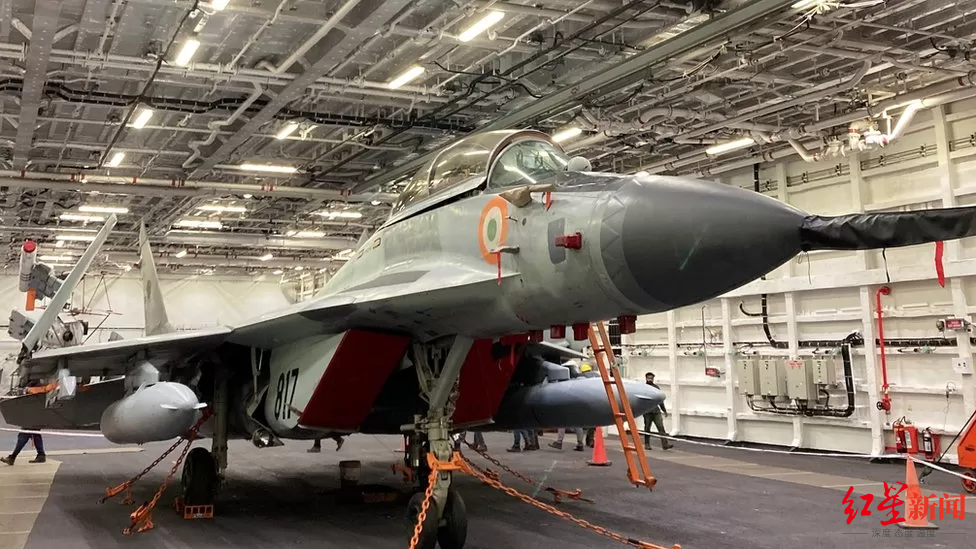
↑ A Russian Mig-29K fighter in the "Vikrant" aircraft carrier
According to reports, in addition to "sharing" MiG-29K fighter with old aircraft carriers, the Indian Navy is seeking to purchase more than 20 new deck fighters on the market. It is reported that the "Blast -M" fighter of Dasau Fit and the F/A-18 "Super Hornet" fighter at the Boeing Company of the United States are all included in the considering scope. In addition, the Indian Navy may also be equipped with the recently purchased U.S. MH-60R "Sea Eagle" anti-submarine helicopter on the "Vikrant" aircraft carrier.
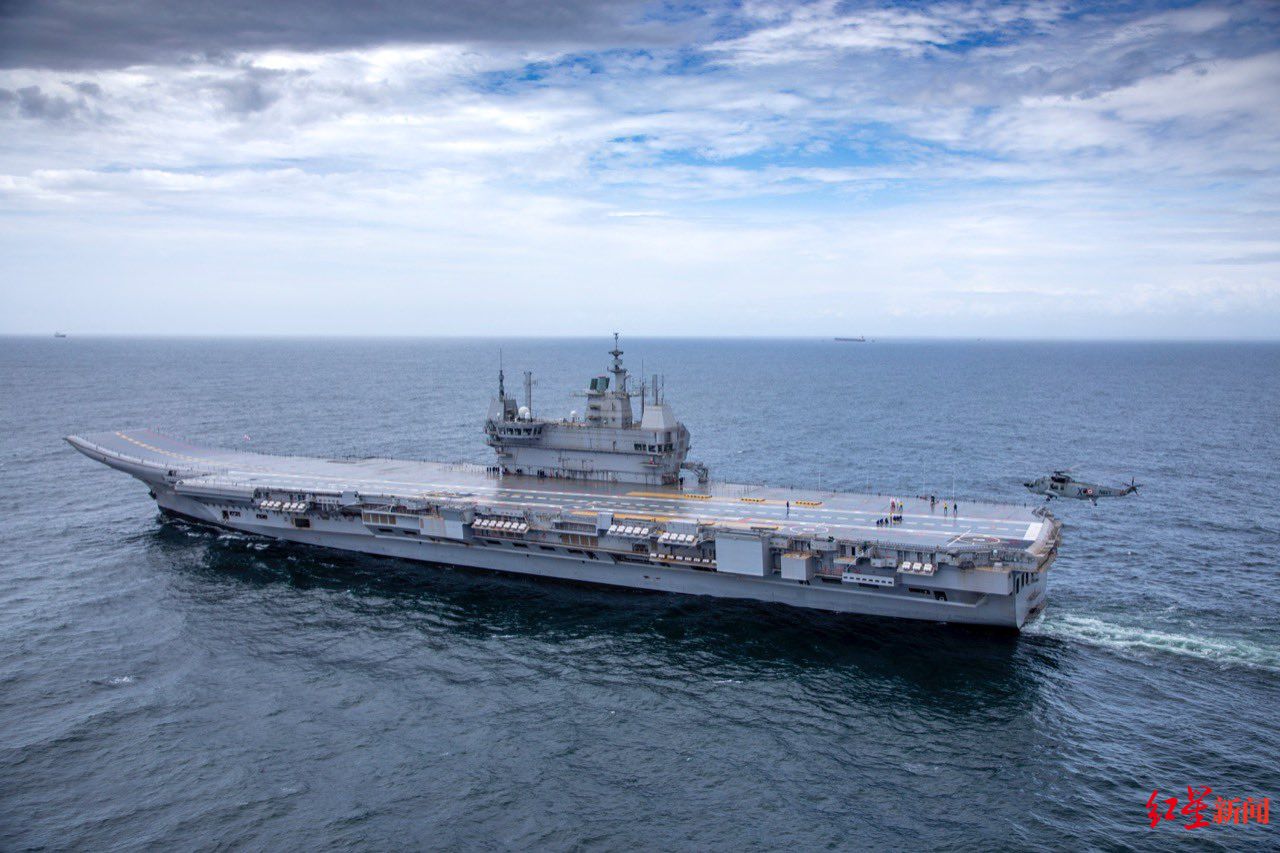
↑ Indian Navy still purchases deck fighters for new aircraft carriers in the market
Local media reports that the flight test of the Indian Navy's new aircraft carriers may begin in November and will end in May 2023. In addition to the preparation of the fighter execution of the flight mission, the "Vikrant" aircraft carrier may take one year or longer to become a combat unit.
The fierce cost or main problem of the dream of the "Three Airlines"
With the official service of the "Vikrant" aircraft carrier, the Indian Navy will have two aircraft carriers at the same time. Former Indian officers and national defense analysts Ajay Schola pointed out that the Indian military and policy makers have been arguing whether the Navy ultimately needs the third or even fourth aircraft carrier to enhance its navy's ability. According to Naer, chairman of the Kachin Shipyard, it is currently investing in the construction of a new dock. It is expected to be completed in 2024 and can be used to build the next aircraft carrier of India.
It is reported that the Indian Navy is considering building the second domestic aircraft carrier "INS Vishal", which means "huge" or "large -scale". It is said that the Indian Navy believes that the "Visal" should have a larger displacement than the "Vikrant", about 65,000 tons. According to the former Navy Commander Robin Doroman, unlike the "Vikrant" by the conventional fuel, the "Vishar" can choose to use nuclear power.
However, the cost of the new aircraft carrier, the reduction of national defense budgets, and the shortage of materials have led to different opinions within the Indian Navy. Analysts pointed out that if the "Vishar" construction project is implemented, its total cost will be as high as US $ 16 billion to $ 17 billion at the current price. At the same time, India's national defense has continued to tighten their belts in recent years. The navy's conventional submarines have 8 missing targets in 2030. The same important light frigates, mine -sweeping ships, and destroyers have also insufficient supply.
Indian Navy officials have stated that after the Ministry of National Defense has not met its requirements for providing additional funds for the long -term procurement of important purchases, reducing the procurement of such equipment is part of its "rationalized" expenditure measures. Former Indian Navy Commander Karambil Singh said that the continuous resource tightening forced the Navy to reduce its goal of operating 200 warships by 2027 to only 175 operations. In order to alleviate the shortage, Singh advocated the technology and weapons and equipment that upgraded the existing and under construction platforms, and looked for cheaper alternatives.
Former Indian Defense Staff Biping Lavat once said that the country's navy needs "more submarines instead of aircraft carriers", and emphasized that any platform on the sea is easily captured by satellites and was shot down by missiles. Essence Another second aircraft carrier against India is the Indian Air Force. The troops are also fighting a larger annual defense budget to make up for the shortage of key equipment such as fighters, helicopters and transport aircraft. Indian military analysts and retired Air Force Batia said that it is necessary to determine the priority of procurement of military equipment based on limited fiscal resources, and "a aircraft carrier is an expensive hobby."
Red Star News reporter Hu Yiling
Editor Deng Yiguang Editor Yang Cheng
- END -
Today, cruise at my Diaoyu Islands!

On August 25, 2022, the Chinese Maritime Police 1302 ship formation was cruised at...
Westing was broken: the Russian army entered

Two months later, the deadlock on the Wudong battlefield was broken: the Russian s...